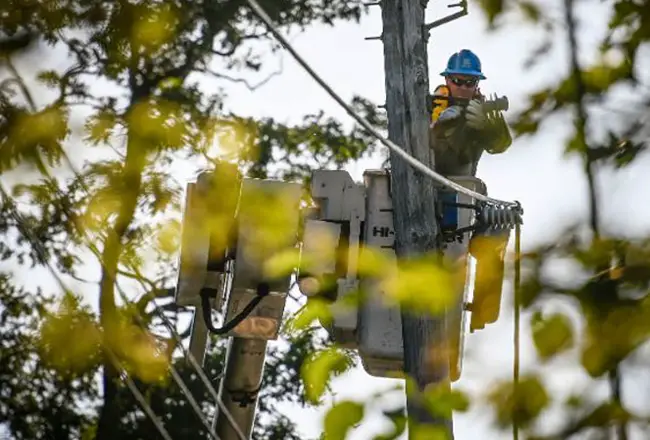Connecticut is making an additional $160 million available for school districts to safely reopen, assist them with costs associated with responding to Covid-19 and support local operations for the 2020-21 academic year.
 The Coronavirus Relief Funds will complement the $15 million already committed from the Governor”™s Emergency Education Relief Fund and $111 million from the Elementary and Secondary School Emergency Relief Funds, bringing the total funding for Connecticut schools to $266 million ”“ one of the largest PK-12 state funding plans per-student in the country, according to Gov. Ned Lamont.
The Coronavirus Relief Funds will complement the $15 million already committed from the Governor”™s Emergency Education Relief Fund and $111 million from the Elementary and Secondary School Emergency Relief Funds, bringing the total funding for Connecticut schools to $266 million ”“ one of the largest PK-12 state funding plans per-student in the country, according to Gov. Ned Lamont.
“These grants are an essential component to providing the best possible educational opportunities during this uncertain time,” Lamont said in a statement. “Through this program, we are going to be able to offer devices, platforms, and internet connectivity to help with distance learning in lower income areas for students just beginning their education through college and graduate school, increase access to higher education by expanding scholarship opportunities, and help those seeking vocational training to launch a new career.”
An allocation of Coronavirus Relief Funds that Connecticut received under the CARES Act will be reserved to assist districts with necessary expenditures incurred due to the public health emergency (March 1-Dec. 30), which were not accounted for in the budget most recently approved as of March 27.
The Connecticut State Department of Education is developing an application process for school districts, which will include specific questions to determine areas of greatest needs specific to their strategies for the effective delivery of in-person, hybrid, and/or remote learning opportunities. The Education Department will provide ongoing technical assistance to districts as it pertains to eligible activities and spending under the Coronavirus Relief Fund, including:
- Personal protective equipment, masks, cleaning supplies;
- Bus monitors to assist students and ensure social distancing, and funding for additional routes in high density areas;
- Laptops, at-home internet connections (already announced but included);
- Additional staff to support new models of remote learning and social distant classrooms; and
- Support staff and services for students with special learning and language needs.
“By strategically aligning our federal and state resources,” said Education Commissioner Miguel Cardona, “we will maximize our efforts to prioritize equitable access to technology and high-quality curriculum, accelerate learning opportunities, and provide for the social and emotional well-being of students, teachers and staff.”
Allocations based on surveys
To inform decisions regarding funding allocations to support the reopening of schools, districts were surveyed and asked to develop various budget scenarios addressing full in-school and hybrid educational models they may need to implement in response to the current health statistics related to the Coronavirus.
Priority was placed on their response to the questions on the Education Department survey about the costs they anticipate incurring beyond what they have budgeted for the 2020”“21 school year in various categories including academic and student supports, staffing, health and safety, technology and transportation.
More than half of the $27.8 million Connecticut received in emergency relief funds will go toward PK-12 to target lower-income areas where the digital divide is greatest and ensure that disadvantaged students and their teachers will have equal access to remote learning.
The state Office of Policy and management will allocate $15 million in emergency relief funds to the Education Department to provide devices and internet connectivity to teachers and students where either schools or families are unable to provide a device, ensuring equitable access to remote learning opportunities. Districts were notified this week of their individual grant awards.
The remaining $12.8 million of funding will be distributed to the Office of Early Childhood to support families”™ access high-quality remote learning platforms for early childhood education, the Office of Higher Education to provide need-based scholarships, and the Connecticut State Colleges and Universities system for improved classroom technology to better accommodate remote learning.
The Elementary and Secondary School Emergency Relief Fund is the main federal funding stream dedicated to supporting the state”™s PK-12 system during the Covid-19 crisis. As previously announced, Connecticut received $111 million in federal funding, of which $11 million is being reserved for state level activities that address the following priorities: internet connectivity; online academic content; and social/emotional supports.
The balance of funds ”“ $99 million ”“ are being distributed to local districts that have significant flexibility in how they spend the grant so that existing education funds can be repurposed to areas of highest need, mitigate fiscal impacts, and immediately address educational disruptions.
The Lamont administration also recently announced its launch of the “Everybody Learns” initiative: A $43.5 million investment in remote learning solutions to close the digital divide in Connecticut by purchasing 50,000 laptops for students, providing 12 months of access to at-home internet for 60,000 students, creating public hotspots free to the public at 200 community sites across the state, and offering social emotional learning content to school districts statewide.
The funding is a combination of the state”™s portion of the federal CARES Act, the Governor”™s Emergency Education Relief and Elementary and Secondary School Emergency Relief funds, and will be supported in part by an initiative of Dalio Education and the Connecticut Conference of Municipalities to ensure students across the state have access to computers and internet connectivity.
Dalio Philanthropies was also involved in the donation of 60,000 laptops to students from some of the state”™s most under-resourced high schools. At the end of July, more than 57,000 Dell laptops had been delivered to the state”™s 33 Alliance Districts that serve significant populations of students who are eligible for free or reduced-price meals.




















